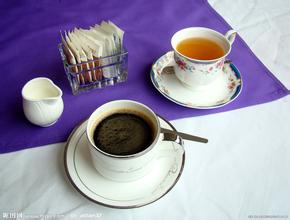Introduction to the description and treatment of geographical characteristics and flavor in Sidamo, Ethiopia
Ethiopian coffee beans
In the past, the Ethiopian sun exposure method used to spread wild coffee fruits directly on the mud ground for exposure. This method has two disadvantages:
1. After picking beans without special screening and treatment, uneven appearance and maturity are mixed together, the process is relatively rough, so the quality of coffee beans is unstable and prone to defective beans.
two。 Coffee farmers usually find an open space near their home to deal with it, so there are often a lot of impurities or dirt on the ground, and coffee is easy to get smelly.
The improved method of tanning, that is, to improve the two shortcomings of the traditional way:
1. When picking beans, only fully ripe crimson coffee cherries are picked. Before exposure, the beans will be screened for defects in the processing plant to make the beans look more average in size and maturity.
two。 Next, use tall wooden frames or whole scaffolding for the sun to avoid the risk of beans smelling on the ground. In the process of exposure, take good care of the beans so that the coffee beans can be evenly exposed to water; every three to five days, coffee workers will manually screen out defective and moldy beans. Therefore, by the end of the exposure, before the beans enter the market to remove the peel and flesh, a bright crimson coffee cherry is already a grade with few defects.
Baking degree: moderate
Origin: Sidamo producing area in southern Ethiopia
Blind test: Ethiopian coffee is mostly in the sun, but now it seems to have changed in recent years, and the fine coffee movement has made people's mouths more and more picky.
Less gossip, the aroma is obvious: according to Westerners, it is rose tea, but I think it is more like the taste of brown sugar and ginger soup, as well as the tonality of honey and oranges. This one is obviously purer than other Sidamo. Under the background of sour and sweet flavor, you can taste the flavor of candied fruit, flowers and chocolate. The palate is a little thin, but very smooth. The tail rhyme has the taste of milk, caramel and chocolate, all of which are typical of Ethiopia. The taste level is very complex but distinct. This is probably why it scored so high (and the price is so expensive).

Important Notice :
前街咖啡 FrontStreet Coffee has moved to new addredd:
FrontStreet Coffee Address: 315,Donghua East Road,GuangZhou
Tel:020 38364473
- Prev

Is the coffee bean produced in Yunnan good? what is the variety price of coffee bean flavor description treatment of Fapu'er Land
Yunnan Coffee beans in 1253 AD, Kublai Khan led his army to cross the golden sand into Yunnan and destroyed Dali. In 1260, he set up the head of Dali. In 1274, Kublai Khan sent Saidian Chi to support Siding, who was established in Yunnan Province in 1276. Saidenchi was appointed as the official affairs of Yunnan Province (equivalent to today's provincial governor), and the provincial capital Zhongqing Road (Kunming). Since then Kunming has replaced Dali as
- Next

Introduction to the treatment method of grinding degree of manor producing area of Indonesian gold Manning flavor variety with sweet and honey characteristics
Indonesian gold mantenin coffee beans gold manning must not be sour? Aiwo fragrant used to do such a test, testing deep-baked gold mantenin, medium-baked gold manning, medium-light baked gold mantenin. The test methods used for Aiwo fragrance are all manual extraction, serving for two, the thickness of the powder and the water temperature are slightly adjusted due to different baking. After the test, Aiwo incense
Related
- Detailed explanation of Jadeite planting Land in Panamanian Jadeite Manor introduction to the grading system of Jadeite competitive bidding, Red bid, Green bid and Rose Summer
- Story of Coffee planting in Brenka region of Costa Rica Stonehenge Manor anaerobic heavy honey treatment of flavor mouth
- What's on the barrel of Blue Mountain Coffee beans?
- Can American coffee also pull flowers? How to use hot American style to pull out a good-looking pattern?
- Can you make a cold extract with coffee beans? What is the right proportion for cold-extracted coffee formula?
- Indonesian PWN Gold Mandrine Coffee Origin Features Flavor How to Chong? Mandolin coffee is American.
- A brief introduction to the flavor characteristics of Brazilian yellow bourbon coffee beans
- What is the effect of different water quality on the flavor of cold-extracted coffee? What kind of water is best for brewing coffee?
- Why do you think of Rose Summer whenever you mention Panamanian coffee?
- Introduction to the characteristics of authentic blue mountain coffee bean producing areas? What is the CIB Coffee Authority in Jamaica?

